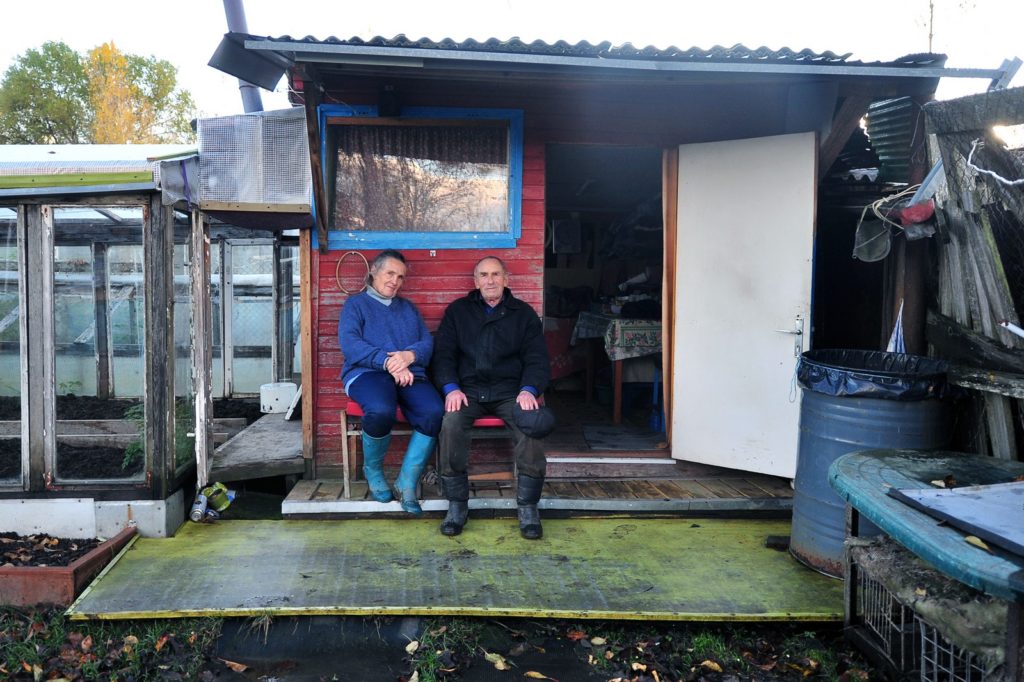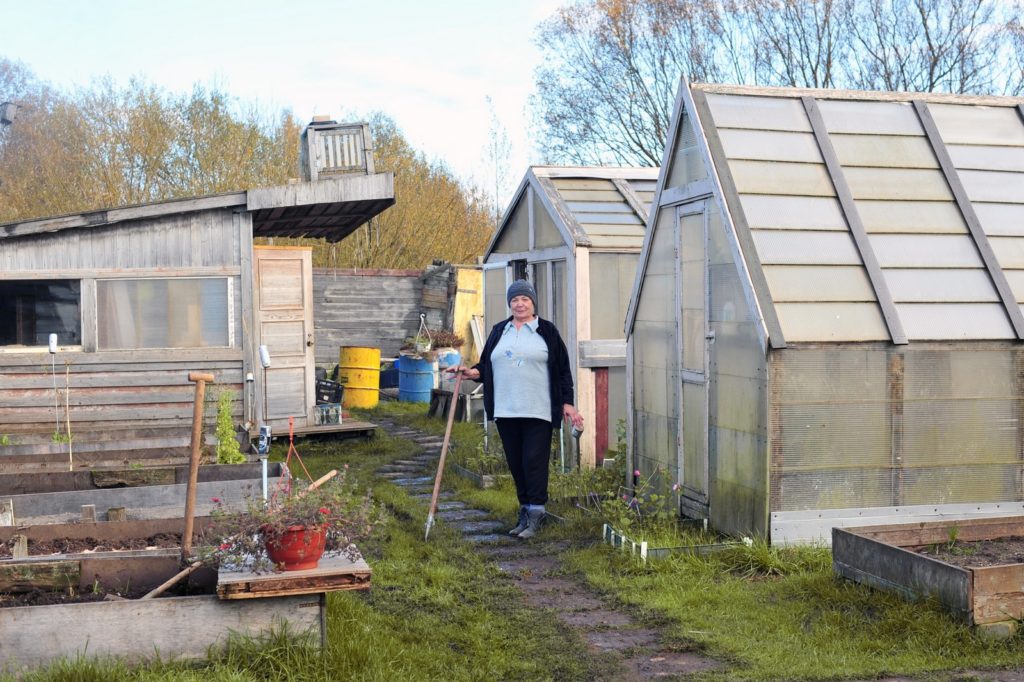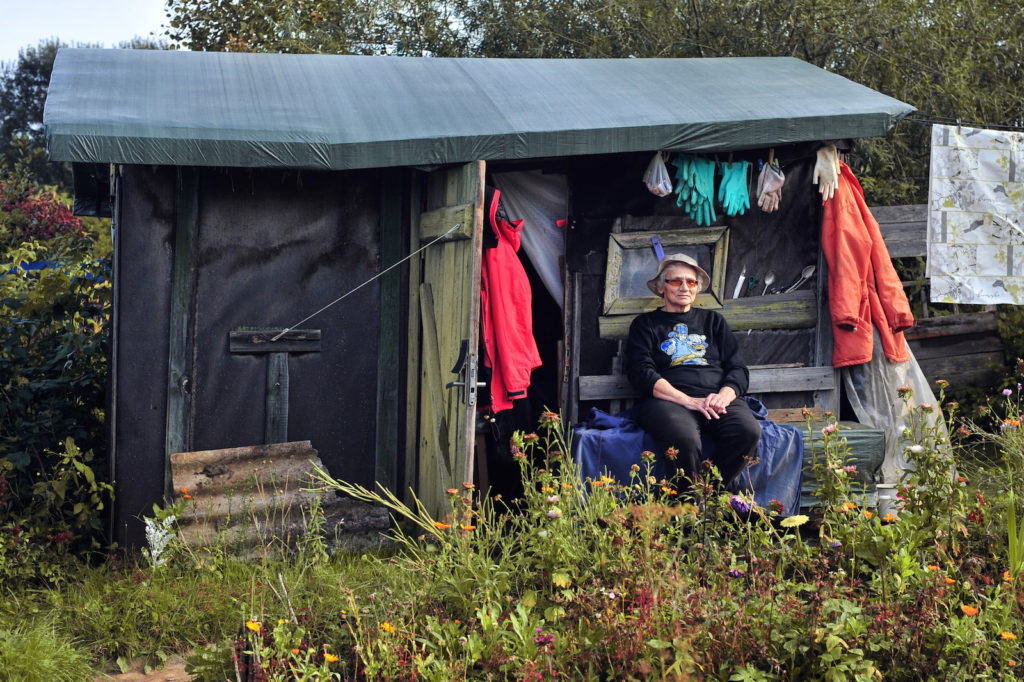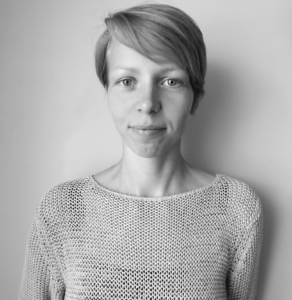Developing community gardening helps to improve the ecological, social and financial situation of the urban environment. Estonia still has the tenacity and skills to grow food under power lines and in other urban wastelands, so let’s treasure these skills and people who have the know-how to use them in public space!
Food has historically played an important role in urban planning, but the current situation requires a new approach. The city’s complete dependence on imported food and the negative environmental impact of global food production and transportation are the main reasons why we should find a new food policy, especially in urban space.
BALANCE
Supporting local food networks and producing food in the city would solve the problem of inevitable economic decline – the more we produce local resources that we need and the more accessible they are, the sturdier our local economy becomes. We can achieve ecological balance by taking care of urban nature, which means creating green networks and caring about urban gardens and the soil of other green areas. For instance, we should let fallen leaves nurture the soil so that it can enrich our production source – as it occurs in nature – instead of raking leaves up. We should plant more local herbs and berry bushes that attract insects, instead of planting foreign bedding plants. Satish Kumar, a well-known Indian environmentalist and the author of ‘Soil, Soul & Society’, also emphasises that honouring nature should be at the centre of every political and social discussion. The more locally it is discussed, the more successful a social system becomes. From this point of view, urban gardening is one of the best communal activities. By bringing together people across different age groups, education and lifestyle backgrounds the resultant exchange of experience and preservation of traditional cultures is adding to social diversity and strengthening our social system.

The only risk in urban agriculture is contaminated soil, but this fear seems to be inflated. It is known that areas with contaminated soil can be ‘cleaned’ with plants, or in other words by growing above-ground plants at first. Needless to say, it is necessary to perform tests concerning toxins in the soil before planting edible plants. If the question arises; whether we want to live in an area that is not suitable for growing food, is it possible for our air, water and soil to be so clean that we need not consider any pollutant effects on food grown within the city?

URBAN AND COMMUNITY GARDENS
In recent years, a number of community gardens have been created in Tartu. (Unfortunately, the life span of some of them has been short.) The non-profit organisation MTÜ Maheaed started their activity in 2011 and five years later thanks to their lobby work, the general planning for the city was amended. The general plan now includes an official landuse function label of ‘urban gardening’, giving gardeners the confidence they need to make longer-term plans. This year, Linnaaiandusfoorum (the Urban Gardening Forum), which was created by people from Maheaed, is active in developing legislation towards more conscious and innovative urban gardening.
The leaders of new urban community gardens will also participate in the forum. Emajõe Aed and Aleksandri Avatud Aed are community gardens that have been created within the last couple of years, and in addition to gardening they deal with social and environmental issues. Aleksandri Avatud Aed was set up at the end of Tiigi Street and is the successor to Vaksali Aed (which now, sadly, is a car park). This former garden which operated for a year, brought together many people interested in urban gardening and sustainable lifestyles. Together the dirty asphalt space was turned into a lush and active meeting place, where community activities, poetry and bonfire nights were organised and where similar new initiatives were born.

THE EXAMPLE OF EMAJÕE AED
Emajõe Aed, of which I am part of the leading team, was created in 2016 by a couple of enthusiastic gardeners who wanted to grow ecological food over a 1000m2 area using various cultivation methods. As the garden was created, the area’s valuable ecological variety and capacity was actively advanced, and Tartu’s communal spirit became stronger next to Lodjakoda. The members of Emajõe Aed believe that Tartu needs an inviting open space that offers practical examples that address gardens and cooking outdoors, as well as ecological building events and landscaping workshops focusing on sustainable lifestyles. Since its foundation the garden has been a public space with users representing a wide range of different age groups, cultural and educational backgrounds. People have joined in on the activities at Emajõe Aed because they want to find out more about nature and pursue therapeutic experience after stressful working days.
Some members of the garden have done their best to offer activities for various social groups: seniors, children and disabled people. An important aim has been to organise events of the Elav Tartu movement (Transition Town Network) in cooperation with other environmentalist associations in Tartu and Tallinn. Unfortunately, due to some new planned developments in urban space, the future of this and many other urban gardens is uncertain, since officials do not know how to integrate urban gardening as a ‘wild garden corner’ into new developments.

Other non-profit organisations such as MTÜ Rabarber, MTÜ Mondo and Linnalabor in Tallinn have taken successful steps towards urban gardening. The Environmental Board, who now thank these previously mentioned activists, is encouraging citizens to make proposals as to where new gardens could be located.
Many gardens have operated from their own initiative for over half a century, as citizens have needed to produce food because there were no better alternatives. Examples would include the long-standing Tiigi gardens, the Hiinalinn allotments, the pilpakülad or ‘splinter- villages’ near Tallinn Airport and Maardu and inhabitants surviving near railroads and under power lines. All of these gardeners who have grown food from a natural need have a wealth of knowledge and skill. Inhabitants of countries that depend on food corporations are increasingly seeking to follow their lead. Recently the focus has been on the City of Tartu’s general planning discussions, since a new residential district and thoroughfare is planned in place of the Hiinalinn allotments and this threatens to wipe out the citizens who have operated in this area all their lives.

PRIORITIES
Unfortunately, urban gardening is underappreciated by Estonian mainstream culture. Hence understanding and help from society do not come naturally. Great advancement could be made if urban planners and architects utilised leading specialists in the natural environment and ecology involved in the design process and followed the principles of holistic and sustainable design. Currently, wild food landscapes and the bushy habitants of city-dwelling animals are not well tolerated in public space, although they are an integral part of a functioning green network.
The general plan of a city often includes preservation of green corridors that are inhabited by many species, yet amid large developments urban nature and gardens frequently go undeveloped. This can not continue, considering the future of endangered biota and growing urbanisation. Gardens must be valued as the most natural and diverse areas in the city – many animals and birds breed there, not to mention pollinating insects.

The Finnish environmental organization Dodo (Dodo Urban Farmers) has launched various experimental urban gardening activities in Helsinki. They are exploring alternative ways of producing food in the city and increasing Helsinki’s ecological diversity. The Kalasatama and Pasila districts have experimented modestly with ‘bag gardening’, i.e. plants being planted in mobile recyclable building bags, which is a good alternative to permanent gardens. To date, Dodo has had a lot of successful projects, including the marketing of food-processing solutions for the newly developed residential areas and the launch of an urban beekeeping project.

FOOD URBANISM
In order to share and grow this knowledge, the Estonian Landscape Architects’ Union is organising an international conference entitled ‘Food Urbanism – a Sustainable City’ in April this year in association with the Elav Tartu movement. The three-day conference will involve specialists from 10 countries. There will be exchanges of ideas on how to achieve food self-sufficiency through deliberate planning in the urban environment, how different parties can come together to cooperate and how this leads to people’s greater understanding of the cultural landscape and increased sense of social belonging.

REA SEPPING works as a landscape architect with the Italian-Estonian company Franchi+Associati OÜ. She is a tutor in the Department of Landscape Architecture at the Estonian University of Life Sciences, a member of the Estonian Landscape Architects’ Union and non-profit organisation MTÜ Elukas, an activist in Tartu’s community gardens and a leader in the civil society movement Elav Tartu.
PHOTOS from series Shanghai, the last plane” portray gardens in Hiinalinn, Tartu. By Maria Kilk, 2017.
PUBLISHED in Maja’s 2018 spring edition (No 93).





